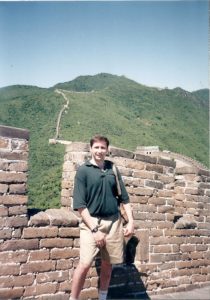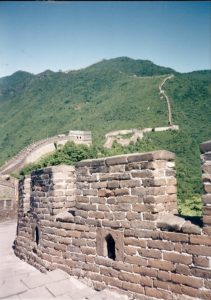

A couple of months after my Jamaica trip, I had the incredible opportunity to travel to China as part of another graduate study trip. Despite a significant injury—breaking my eye socket in three places just a few weeks before the trip during a softball game—I was determined to continue with the journey. The resulting black eye became a conversation starter, prompting regular questioning from curious onlookers.
Despite the initial discomfort, the trip itself was nothing short of fantastic. Our journey began in Hong Kong, a city that embodies a dynamic blend of East and West. The stunning harbor views, bustling markets, and towering skyscrapers were immediately captivating. Exploring the vibrant neighborhoods, tasting the diverse cuisine, and experiencing the fast-paced lifestyle of Hong Kong provided an exhilarating start to our trip. The city’s rich history and modern energy set the stage for the adventures that followed.
From Hong Kong, we traveled to Shanghai, where the city’s impressive skyline, dominated by towering skyscrapers and illuminated by vibrant lights, showcased China’s rapid modernization. Shanghai’s blend of traditional culture and contemporary lifestyle offered a unique perspective on the country’s development. The bustling streets and dynamic atmosphere were a sharp contrast to the serene temples and historical sites we visited, highlighting the city’s diverse character.
In Nanjing, we delved into China’s profound historical heritage. Visiting the ancient city walls and the Sun Yat-sen Mausoleum. The Sun Yat-sen Mausoleum is a major historical and cultural site built in honor of Dr. Sun Yat-sen, the founding father of the Republic of China. It is situated at the foot of the Purple Mountain in the eastern suburb of Nanjing. The mausoleum complex includes a grand marble stairway, a mausoleum hall, and several other buildings set within a beautiful park area. It is one of the most visited tourist attractions in Nanjing and is considered a significant symbol of modern China’s history. The city’s beautiful parks and serene temples offered moments of reflection amidst the busy itinerary. Nanjing’s deep historical roots and cultural significance made it a memorable stop on our journey.
Beijing, the heart of China’s historical and political landscape, was our next destination. Perhaps the highlight of the trip was visiting the Great Wall of China. Standing atop the ancient structure, marveling at its grandeur and the vast landscapes it traverses, was an awe-inspiring experience. The sheer scale and historical significance of the Great Wall are something that words can hardly capture. The Forbidden City in Beijing was another unforgettable destination. Walking through the majestic gates and exploring the expansive courtyards and intricate palaces, I felt transported back in time to the era of emperors and dynasties. The Forbidden City’s architectural splendor and the stories it holds within its walls made it a close second to the Great Wall in terms of highlights.
Overall, despite the initial setback of my injury, the graduate study trip to China was an enriching and unforgettable experience. Each city we visited offered its own unique charm and insights, contributing to a deeper understanding of China’s culture, history, and rapid transformation.